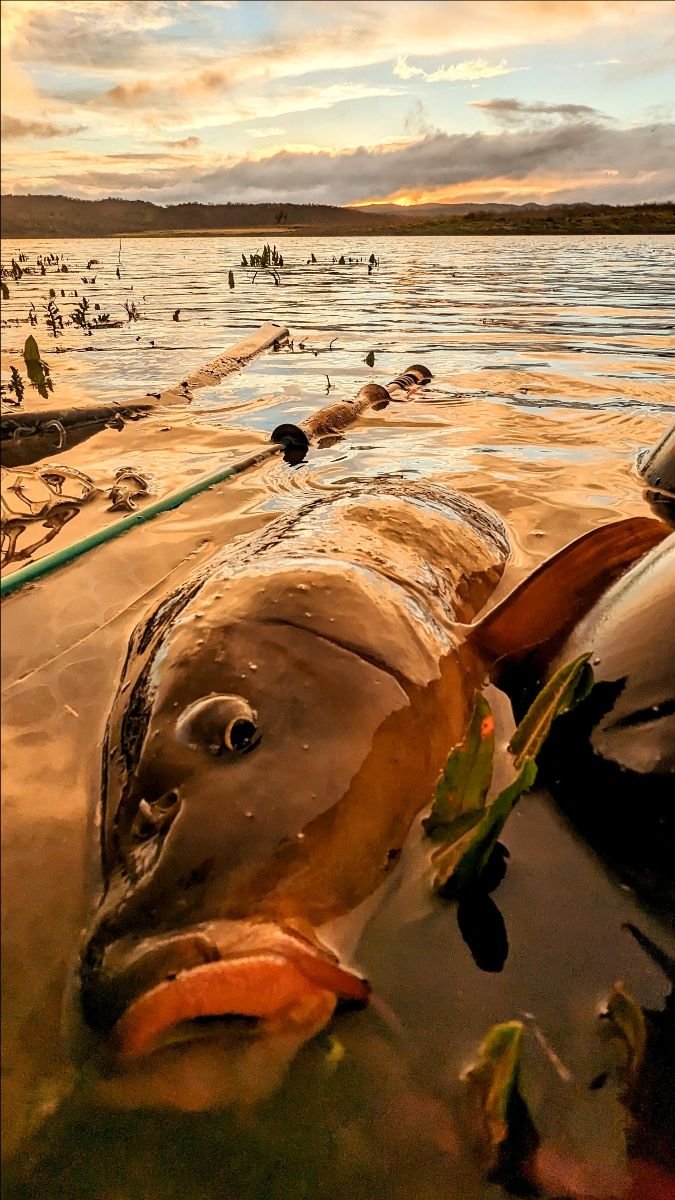Channeling Your Inner Fly Carpin’ Detective
Finding carp to catch on the fly in a big lake can seem like a daunting task. As a fly angler, the fish won’t smell or sense your fly, and won’t hunt it down. You need to put the fly in their path, and hope you matched what they were feeding on well enough that they decide to take a bite out of your offering. So with that in mind, that we are sight fishing, you need to narrow down the areas in which you might find the fish, since very likely, you are not going to be able to cover every square inch of the lake in a day, not to mention that carp tend to move around a lot, so staying on top of their movements is very important. So turn on some English detective dramas (there’s around 3000 to choose from), learn some detective skills, and get out there and start sleuthing.
Wind
Finding carp in a big lake can be tough, there’s lots of water and lots of feeding areas, and you can spend a lot of time searching for fish. Utilizing a few different factors, you can help yourself by narrowing down the areas to focus on. Wind is one of the biggest factors that can help you find fish, since it influences all the following factors. The windward side will have warmer water, especially in winter/early spring. It brings food, whether that be suspending midges or plankton that feeds the prey items carp eat, or because it stirs up the bottom, making nymphs, worms and other food items available to the carp. If you’re just starting to approach a certain body of water for carp, look at some wind forecasts, and not just for the day you’re out there, but what the previous few days wind was like.
Temperature
Influenced by wind, but especially early and late season, and all throughout winter, you should definitely be taking the temperature of the water. With the exception of the heat of summer, carp will search out the warmest portion of any given piece of water, and understanding how the water temperature changes throughout the day can greatly influence your success on the water. Dark bottoms will warm faster, south facing shorelines warm up before north facing ones, and a warmer flat near deep water will always be juicy early in the season. River inlets can provide cooler water, which can be a negative in early season, but a positive in the dog days of summer. You don’t need to become a meteorologist, but understanding how the temperature differs in various parts of a lake is essential to be an effective carp angler.
Find the Food
Sounds obvious, but do some research on what prey items exist in the areas you plan on fishing, and not just have flies that imitate that, but understand how these prey items live and move in a way that can affect how the carp move. If the main forage is clams, you might want to focus on gravel bars, if the main forage is midges, find the eddies created by the wind that collect midge clusters. Knowing how wind and temperature affect these food items for carp, will help you locate the fish.
Spotting Fish
This might sound cliche, but the key to seeing carp in water is not to look for the carp, look at the bottom and then notice things that aren’t the bottom. But first, to the unsexy stuff - move slowly. I cannot stress enough how slowly you need to walk to see all that the feeding areas have to offer. Most people think they are moving slow enough when they need to be moving at least three times slower. To see the fish, you need to not scare them, at least if you want to catch them. Become a part of the environment around you, if it’s flatland, crouch a bit so you don’t stand out like bigfoot in a desert, if the shoreline has trees and bushes, use those to your advantage. There’s a delicate balance in finding good footing while also keeping an eye on the carp. Make sure you have a good solid footstep - no twigs or loose rocks underneath your foot - before stepping down with your other foot.
Keeping a Journal
A step a lot of anglers don’t take is to journal down the conditions after every day of fishing, but it is an important one to see the patterns in behavior. It doesn’t need to be super complicated, but jot down the moon phase, the wind direction, water temperature, daily high and low temps, and where you found fish and how they were behaving. After a while of noting these details, you’ll see some patterns as to where the fish are feeding in what conditions, and how they react to things like moon phases, wind direction and cold snaps. This will help you clue in on where to fish not only in your body of water, but when you check out a new lake or river, will help you narrow down where to start.
Director of Fly Education
DAGUR ARNI GUOMUNDSSON







